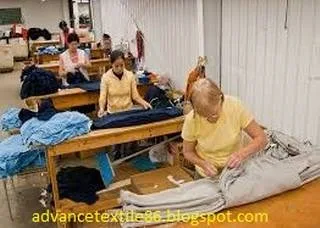Quality control
The process by which entities review the quality of all factors involved in a
production is called quality control. ISO 9000 is a part of quality control
that focuses on meeting quality requirements.
Quality
control emphasizes three aspects, such as-
a.
Elements such as control, job management, defined and well-managed processes,
performance and integrity criteria, and record identification.
b.
Competence, such as knowledge, skills, experience, and qualifications
c.
Soft elements, Such as staff, integrity, confidence, organizational culture,
motivation, team attitude, and quality relationships.
Inspection
is the main component of quality control, where a physical product is examined
visually. Product inspectors will provide a list and description of unacceptable
product defects such as cracks or surface stains for example.
Quality control in the knitted fabric
1.
The main contribution of quality control is saving time and money. If any error
occurs, the knitting machine must be stopped to correct the error, which
reduces the time, and is uniform in the overall production process.
2.
Loop density is the most important factor in defining the quality of the
knitted fabric and it is directly related to the fabric presence, field weight
per unit, dimensional stability, fabric weight, tensile factor, drape, and many
other factors.
3.
Quality control in the knitting process are two main causes of inconsistency
that lead to fabric defects are raw material management before the knitting
process and variation in parameters during the knitting process.
4.
The selection of yarn with a proper yarn count is important in determining the
knitted fabric quality since only the correct yarn count gives optimal knitting
performance for a specific machine gauge and structure.
5. An elastic yarn is easier to knit and results
in fewer knitting faults such as drop stitches, holes, and bad selvages.
6.
This refers to the irregularity and non-consistency of the yarn, which directly
affects the quality and weaving performance of the woven fabric.
7.
Quality control during the knitting process, and precision in the settings of the knitting
machine during the whole knitting process is important to produce a fruitless
knitted fabric.
8.
By carefully controlling the knitting tension, the variations in loop length
can be minimized and the quality of knitted fabric improved.
9.
The length of yarn in one stitch is another important factor that permanently
affects the quality of a knitted fabric.










0 Comments